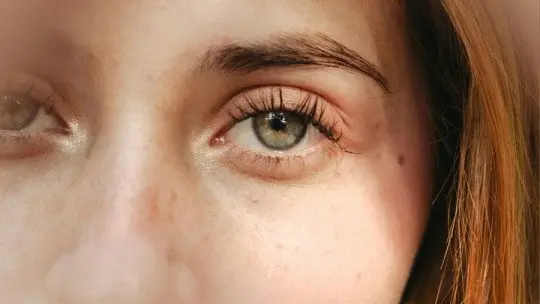
One of the aspects of social life involves seeing things in others that we do not have and that awakens a certain envy in us. Whether it’s wealth, beauty, property, or personality, there are things that seem to make other people happy, so it makes sense to want it for ourselves too.
With the great influence of the mass media, especially social networks in recent years, a social phenomenon such as mimetic desire has been gaining more and more strength. People crave what they see in the media, what makes famous people look like successful people.
In this article we are going to talk about this curious concept that, although it must have existed throughout history, It was not until relatively recently that it was baptized as mimetic desire Let’s dig a little deeper into it.
What is mimetic desire?
Defining mimetic desire is not easy, even though no one escapes its spell. We can say that it is a social desire based, basically, on wanting the same thing as others, the result of envy and the idea that if there is something that seems to make other people happy, why shouldn’t it make us happy? It is inevitable to long for the things that others have.
This desire must have been present throughout the entire history of humanity, but has been intensifying exponentially in consumerist societies Capitalism, supported by the media, has awakened unnecessary needs in people, who, bombarded with all types of advertisements and publicity in movies, series and, more currently, on social networks, see products and services that they would like to have. We don’t need them, but the media makes sure we think just the opposite.
The mimetic desire already begins to manifest in childhood, something that can be observed in babies. Let’s think about one of them, surrounded by many toys but who doesn’t pay attention to them because he is too busy playing with his pacifier. Suddenly, his older brother comes and wants to play with a toy car that was lying around. The baby, upon seeing his little brother, starts throwing a tantrum because now he wants to play with that car to which until a few seconds ago he was not paying any attention.

The origin of the concept
Although mimetic desire has existed throughout the history of humanity, it was the philosopher René Girard who coined the term during the 1970s. He originally conceived it by analyzing great works of universal literature, seeing a common pattern. Some examples that Girard himself analyzed were “Don Quixote” by Miguel de Cervantes, “Madame Bovary” by Gustave Flaubert, “Red and Black” by Stendhal, “In Search of Lost Time” by Marcel Proust and some works by Dostoevsky.
The protagonist of many of these works He longed to be what other great characters had been, feeling great discomfort for not having achieved it They were stories that reflected how a desire was awakened inside the characters that was not genuine, but rather to be just like their idol. This recurring figure in universal literature was what made René Girard propose the idea of mimetic desire, very applicable to people of flesh and blood and which is articulated not only in the world of advertising and the mass media, but also in sexual desire, business or aesthetics.
Examples of mimetic desire
Social networks feed mimetic desire. They make us see things every day, objects and services that we do not need but that by the simple fact of seeing them in the mainstream media arouse our interest It is this desire that causes us all to end up imitating each other, becoming a homogeneous society. We feel that if we do not have the same things as others we are not worth it, that we do not fit in, which means we can understand that mimetic desire can be a source of discomfort.
With or without social networks, this mimetic desire contributes to fashion trends. For example, anyone whose childhood took place in the 2000s will remember that at that time colored silicone bracelets with engraved phrases became fashionable. Although these bracelets were, in the opinion of many, simple, ugly and tacky, every boy and girl who did not have one was seen as a weirdo. For this reason, many fell into social pressure and spent their weekly pay comparing them.
Another more recent example is the case of spinners, a fashion that even reached adults. Today they are still sold, but it was 5 or 6 years ago when everyone was crazy about these little toys that today we don’t really know what they were for. Some said they were used to relax, others that they helped children concentrate. The only thing they seemed to be useful for was taking money from people with the excuse that whoever didn’t have it would lose it.
These are just two of the many examples that we could give that would serve to demonstrate the effect of this sociopsychological phenomenon. Mimetic desire articulates all fashions explains our most basic motivations, defines commercial rivalry and, unfortunately, is also behind the appearance and chronicification of certain psychological disorders, such as eating behavior.
In fact, René Girard himself talks about the relationship between an eating disorder and mimetic desire in his book “Anorexia and mimetic desire” (2009). In this post he talks about how the beauty canon has exercised a true tyranny making many women eagerly desire to have an extremely thin body, similar to that of supermodels and other celebrities.
It also happens with men who, eager to have the body of actors, influencers and public figures like Jason Momoa or Chris Evans, end up developing an image disorder such as vigorexia. It is not surprising then, augmented by social networks, it seems that having a well-sculpted body is synonymous with unlimited happiness, wealth and sex appeal.
Mimetic desire, survival and psychological distress
It is believed that this desire to have what others have would have an evolutionary explanation and implication in survival This question has been addressed by Luker Burgis in his book “Wanting: The Power of Mimetic Desire in Everyday Life”. Throughout evolution, people have imitated the behaviors of others, believing that, if that has helped them survive, it should work for us too.
Let’s think about prehistoric humans. If a group of our ancestors developed a new hunting or farming technique and it worked to combat hunger, it is logical to think that others would want to imitate them. This would cause the advances of one human group to end up expanding to others, causing humanity to progress together.
Nowadays, mimetic desire no longer seems to fulfill this role. Far from helping us acquire something beneficial that others do, this desire to have what others have can plunge us into intense rivalry It can cause us to have unhealthy envy, wanting to have what our idols have and even wanting to harm those who have more than us. Although we try to be more like those who have things that we believe are positive, if we cannot achieve them we may insist on trying to make those who have them lose them.
And if they are not objects, we end up wanting the sculpted bodies of athletes or the lives of famous people. We want what others have, we want to be like them even in the way we dress and be. This is also one of the reasons why certain meaningless challenges (e.g. eating dish soap) go viral. Mimetic desire motivates all types of large-scale social behavior, no matter how stupid it may seem.
It is for this reason that mimetic desire can contain great suffering, especially on a psychological level Wanting to imitate others without being aware that one cannot be the same and that each person has their strengths and weaknesses, that they will never be exactly like anyone else, causes discomfort because every possible effort is made and no results are obtained.
Only when we realize that no one is the same, that everyone is as they are and will have their own successes and failures, will we feel a little freer by allowing ourselves to be ourselves. The obsession with being like others will only bring us discomfort and dissatisfaction. Happiness is not found in others, it is found in oneself, who has everything or more than what is necessary to achieve it.








